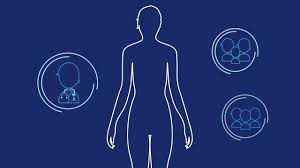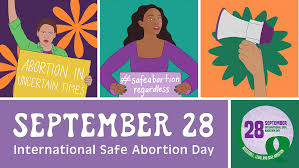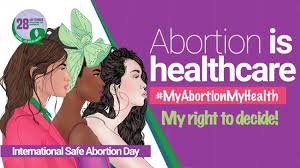Abortion:

Abortion is the termination of a pregnancy by removing or expelling the embryo or fetus from the uterus before it can survive outside the womb.
Here is a detailed overview of it:
1. Types of Abortion:

1. Medical Abortion:
Medical termination involves using medication to terminate a pregnancy.
It is typically used in the early stages of pregnancy, usually up to around 10 weeks gestation.
– The most common medications used for medical abortion include:
– Mifepristone: This medication blocks the hormone progesterone, which is needed to sustain a pregnancy.
– Misoprostol: This medication causes the uterus to contract and expel the pregnancy tissue.
– Medical abortion is often preferred by some women.
Because it can be done in the privacy of their own home and does not require a surgical procedure.
– It typically involves taking mifepristone first, followed by misoprostol within a certain timeframe.
The woman may experience cramping and bleeding as the pregnancy tissue is expelled.
2. Surgical Abortion:
Surgical abortion involves a procedure to remove the pregnancy tissue from the uterus.
It is typically performed in a healthcare facility by trained healthcare professionals.
– The main types of surgical abortion include:
Suction Aspiration (Vacuum Aspiration):
This involves using suction to remove the pregnancy tissue from the uterus.
It is commonly used in the first trimester of pregnancy (up to around 12 weeks gestation).
– Dilation and Evacuation (D&C):
This involves dilating the cervix and using a surgical instrument called a curette to remove the pregnancy tissue from the uterus.
It may be used in the first trimester or early second trimester of pregnancy.
Dilation and Evacuation (D&E):
This is similar to D&C but is typically used in the second trimester of pregnancy (after around 12 weeks gestation).
It involves dilating the cervix and using surgical instruments to remove the pregnancy tissue.
3. Induction Abortion:
– Induction abortion involves using medication to induce labor and expel the pregnancy tissue from the uterus. It is typically used in the second trimester of pregnancy.
– This method may be used in cases where surgical abortion is not feasible or preferred, such as in later stages of pregnancy.
4. Manual Vacuum Aspiration (MVA):
Manual vacuum aspiration is a type of suction abortion that uses a handheld syringe to create suction and remove the pregnancy tissue from the uterus.
It is similar to suction aspiration but may be used in settings where electricity or specialized equipment is not available.
5. Hysterotomy:
Hysterotomy is a surgical procedure similar to a cesarean section, where an incision is made in the abdomen and uterus to remove the pregnancy tissue.
It is rarely used and typically reserved for situations where other methods are not feasible or safe.
It’s important to note that the availability of different feticide methods may vary depending on factors such as legal regulations, healthcare infrastructure, and the preferences of the woman and her healthcare provider.
Additionally, all termination procedures should be performed by trained healthcare professionals in safe and hygienic environments to minimize risks and ensure the woman’s health and well-being.
Abortion – Impacts on women’s health –

Access to abortion can have significant impacts on women’s health, both positively and negatively, depending on various factors including the legality, availability, and quality of abortion services.
Here are some ways in which access to abortion can affect women’s health:
1. Safety and Health Risks:
Restricted access to safe and legal abortion can lead women to seek unsafe and clandestine procedures, which pose serious risks to their health and can result in complications such as hemorrhage, infection, organ damage, and even death.
2. Maternal Health:
Unintended pregnancies can have adverse effects on maternal health, including increased risks of maternal mortality and morbidity, especially in cases where the pregnancy is unwanted or poses health risks to the mother.
3. Reproductive Rights and Autonomy:
Access to safe and legal abortion is essential for women’s reproductive rights and autonomy over their bodies. Restrictions on abortion access can undermine women’s ability to make decisions about their own health and future, leading to negative consequences for their overall well-being.
4. Mental Health:
Unintended pregnancies, particularly those that occur in situations of coercion, violence, or lack of support, can have significant impacts on women’s mental health, leading to stress, anxiety, depression, and other psychological issues.
5. Economic and Social Well-being:
Unintended pregnancies and lack of access to abortion can exacerbate economic and social inequalities, particularly for marginalized women who may face barriers in accessing healthcare services and resources to support themselves and their families.
6. Family Planning:
Access to abortion is an essential component of comprehensive reproductive healthcare and family planning services.
It allows women to make informed choices about if and when to have children, which can positively impact their overall health and well-being, as well as that of their families.
7. Physical Well-being:
Safe abortion services contribute to women’s physical well-being by providing them with timely access to medical care and procedures that can prevent complications associated with unsafe abortion practices.
Overall, access to safe and legal abortion is crucial for promoting women’s health, rights, and well-being.
Restricting or limiting access to abortion services can have serious negative consequences for women, including increased health risks, decreased autonomy, and perpetuation of social and economic inequalities.
Abortion – Effects on the ovaries and uterus-

Abortion, particularly induced abortion (either through medication or surgical procedures), can have various effects on the ovaries and uterus.
Here is some detailed information on how abortion can impact these reproductive organs:
1. Uterus:
Uterine Wall:
During an abortion procedure, particularly surgical abortion, the uterine wall is manipulated to remove the pregnancy tissue.
This manipulation can cause temporary trauma to the uterine lining, leading to bleeding and cramping, which are normal post-abortion symptoms.
Infection Risk:
Any invasive procedure, including abortion, carries a risk of infection.
Infections of the uterus (endometritis) can occur after abortion, especially if proper sterile techniques are not followed during the procedure.
However, with safe and hygienic abortion practices, the risk of infection is minimal.
Uterine Perforation:
In rare cases, particularly during surgical abortions, there is a risk of uterine perforation, where a surgical instrument punctures the uterine wall.
This can lead to complications such as bleeding and injury to nearby organs.
However, uterine perforation is uncommon, especially when the procedure is performed by a skilled healthcare provider.
2. Ovaries:
Hormonal Changes:
Abortion, especially induced abortion, can temporarily disrupt hormonal balance in the body, including changes in levels of estrogen and progesterone.
However, these hormonal changes are usually transient and return to normal within a few weeks after the procedure.
Ovulation:
Some studies suggest that abortion may not have a significant impact on subsequent ovulation.
In most cases, ovulation resumes within a few weeks to a month after abortion, allowing the woman to return to her normal menstrual cycle.
However, individual variations may occur, and it’s essential for women to use contraception if they wish to prevent pregnancy immediately after an abortion.
Ovarian Function:
Generally, abortion does not have long-term effects on ovarian function or fertility.
The ovaries typically continue to function normally after an abortion, allowing women to conceive again if they desire.
It’s important to note that complications related to abortion, such as infection or uterine perforation, are relatively rare, especially when the procedure is performed by trained healthcare professionals in a safe and regulated environment.
Additionally, the vast majority of women who undergo abortion do not experience long-term negative effects on their reproductive health.
However, it’s crucial for women to receive appropriate pre-abortion counseling, post-abortion care, and follow-up to ensure their overall health and well-being.
Womb damage after an abortion-

Womb damage after an abortion is rare, especially when the procedure is performed by trained healthcare professionals in a safe and hygienic environment.
However, in some cases, complications may occur that can lead to damage to the uterus (womb).
Here are some signs and symptoms that may indicate womb damage after an abortion:
1. Heavy or Prolonged Bleeding:
Excessive bleeding that persists for an extended period after the abortion procedure may indicate damage to the uterus, such as uterine perforation or incomplete evacuation of the pregnancy tissue.
2. Severe Pain:
Persistent or severe abdominal or pelvic pain, especially if it is accompanied by fever, chills, or signs of infection, could be a sign of complications such as uterine perforation, infection, or retained products of conception.
3. Foul-Smelling Discharge:
An unpleasant or foul-smelling discharge from the vagina, particularly if it is accompanied by fever or abdominal pain, may indicate an infection of the uterus (endometritis) or other pelvic organs.
4. Irregular Menstrual Cycles:
Changes in menstrual patterns, such as irregular or absent periods, heavy bleeding, or abnormal vaginal discharge, may occur if there is scarring or damage to the uterine lining (endometrium) following the abortion.
5. Pelvic Inflammatory Disease (PID):
Pelvic inflammatory disease is an infection of the reproductive organs, including the uterus, fallopian tubes, and ovaries.
Symptoms may include lower abdominal pain, abnormal vaginal discharge, painful urination, and fever.
PID can sometimes occur as a complication of abortion, particularly if there is inadequate post-procedure care or if there is an untreated sexually transmitted infection.
6. Infertility or Difficulty Getting Pregnant:
In severe cases of uterine damage, such as extensive scarring or adhesions (Asherman’s syndrome), infertility or difficulty conceiving may occur.
This is rare but can happen if the lining of the uterus is significantly affected by the abortion procedure.
7. Chronic Pelvic Pain:
Persistent or recurrent pelvic pain that lasts for an extended period after the abortion may be a sign of underlying pelvic inflammatory disease, endometriosis, or other complications.
It’s important to note that experiencing one or more of these signs or symptoms does not necessarily mean that there is womb damage after an abortion.
However, if any of these symptoms occur after an abortion procedure, it’s essential to seek medical attention promptly.
A healthcare provider can perform an evaluation, including a physical examination, laboratory tests, and imaging studies if necessary, to determine the cause of the symptoms and provide appropriate treatment.
Early detection and management of complications are crucial for minimizing the risk of long-term damage and promoting the woman’s health and well-being.
Post-abortion care-

Post-abortion care is a critical component of comprehensive reproductive healthcare that focuses on providing support, counseling, and medical attention to women after they have undergone an abortion.
Here’s a detailed overview of post-abortion care:
1. Physical Health:
Monitoring:
After an abortion procedure, healthcare providers monitor the woman’s physical condition to ensure that there are no immediate complications, such as excessive bleeding, infection, or uterine perforation.
Pain Management:
Women may experience cramping and discomfort after an abortion, particularly within the first few days.
Pain management options, such as over-the-counter pain relievers or prescription medications, may be provided to alleviate discomfort.
Follow-up:
Follow-up appointments with healthcare providers are often recommended to assess the woman’s recovery and address any concerns or complications that may arise.
2. Emotional Support and Counseling:
Counseling Services:
Many women may experience a range of emotions following a feticide , including relief, sadness, guilt, or anxiety.
Counseling services are available to provide emotional support, help women process their feelings, and address any concerns or questions they may have about their decision.
Support Groups:
Support groups or peer counseling programs may offer additional opportunities for women to connect with others who have had similar experiences and share their thoughts and feelings in a supportive environment.
3. Contraceptive Counseling and Access-
Family Planning:
Post-abortion care often includes counseling on contraception and family planning options to help women prevent future unintended pregnancies.
Healthcare providers discuss different contraceptive methods, their effectiveness, and how to access them.
Immediate Contraception:
Depending on the woman’s preferences and circumstances, immediate post-abortion contraception may be provided to prevent pregnancy right away. Options may include oral contraceptives, contraceptive patches, intrauterine devices (IUDs), or contraceptive implants.
4. Information on Warning Signs and Follow-up Care:
Women receive information on warning signs of complications that may require medical attention, such as excessive bleeding, severe pain, fever, or signs of infection.
They are instructed on when to seek emergency care and how to contact healthcare providers if needed.
– Clear instructions are provided on how to care for themselves at home, including guidelines for managing pain, when to resume normal activities, and when to avoid certain activities or behaviors.
5. Respect for Autonomy and Privacy:
Post-abortion care respects women’s autonomy and privacy, ensuring that they have control over their healthcare decisions and that their confidentiality is protected.
Women are empowered to make informed choices about their reproductive health based on their individual needs and circumstances.
Overall, post-abortion care aims to improve women’s physical and mental well-being, facilitate their recovery, and provide them with the information and tools they need to make educated decisions about their reproductive health.
By providing comprehensive and compassionate care, post-abortion services contribute to the overall health and empowerment of women.
Repeated abortion-

Repeated abortion, also known as repeat abortion or multiple abortions, can have various effects on a woman’s physical health, mental well-being, and reproductive outcomes.
Here are some details on how repeated abortion can affect individuals:
1. Physical Health:
Complications:
Repeated abortions may increase the risk of certain complications associated with the procedure, such as infection, uterine scarring, cervical damage, and uterine perforation.
These complications can potentially impact fertility and future pregnancies.
Uterine Damage:
Multiple abortions can lead to thinning of the uterine wall or adhesions (scar tissue) within the uterus, which may affect the ability of the uterus to support a pregnancy in the future.
Ectopic Pregnancy:
Some research suggests that repeated abortions may be associated with a higher risk of ectopic pregnancy, where the fertilized egg implants outside the uterus, typically in the fallopian tube.
Ectopic pregnancies can be life-threatening and may require medical intervention.
Preterm Birth:
There is some evidence to suggest that women who have had multiple abortions may have a slightly increased risk of preterm birth in subsequent pregnancies. Preterm birth can lead to health complications for the newborn.
2. Mental Health:
Emotional Distress:
Repeated abortions can be emotionally challenging for some women, leading to feelings of guilt, sadness, anxiety, or grief.
Women may experience conflicting emotions or struggle with decision-making and coping mechanisms.
Psychological Impact:
Research on the psychological effects of repeated abortion is mixed.
With some studies suggesting that it may contribute to increased psychological distress, while others find no significant long-term effects on mental health.
Individual experiences vary, and some women may benefit from counseling or support services to address emotional concerns.
3. Reproductive Outcomes:
Fertility:
While most women who have had multiple abortions can conceive again, there is a potential risk of fertility issues or difficulties achieving pregnancy.
Particularly if complications arise from the procedures or if there is underlying reproductive health concerns.
Pregnancy Loss:
Multiple abortions may be associated with a slightly increased risk of miscarriage in subsequent pregnancies.
However, the overall impact on pregnancy outcomes may depend on various factors, including the woman’s age, overall health, and medical history.
4. Social and Ethical Considerations:
Stigma and Judgment:
Women who have had multiple abortions may face societal stigma or judgment, which can contribute to feelings of shame or isolation.
It’s essential for society to adopt a compassionate and non-judgmental approach to support women’s reproductive choices and experiences.
Overall, while repeated termination may carry certain risks and challenges, it’s crucial for women to have access to comprehensive reproductive healthcare, including counseling, contraception, and support services.
Healthcare providers play a vital role in addressing the individual needs and concerns of women who have undergone multiple abortions, promoting their physical and emotional well-being, and empowering them to make informed decisions about their reproductive health.
Overall, termination is a complex and multifaceted issue with significant medical, social, and ethical dimensions.
Ensuring access to safe and legal termination services is crucial for protecting the health, rights, and well-being of women worldwide.
Abortion related laws- In India and other countries –

In India, abortion-related laws are governed primarily by the Medical Termination of Pregnancy (MTP) Act, 1971, which regulates the termination of pregnancies and provides guidelines for safe and legal abortion services.
Here are the key aspects of abortion-related acts and laws in India:
1. Medical Termination of Pregnancy (MTP) Act, 1971:
The MTP Act, enacted in 1971 and amended in 2002, provides the legal framework for abortion services in India.
Under the MTP Act, abortion is permitted under specific circumstances and conditions:
Up to 12 weeks of pregnancy: Abortion can be performed by a registered medical practitioner (RMP) in any healthcare facility.
– Between 12 to 20 weeks of pregnancy: Abortion requires the opinion of two RMPs and may be performed in registered hospitals or clinics.
– Beyond 20 weeks of pregnancy: Abortion is permitted only if it is necessary to save the life of the woman or prevent grave injury to her physical or mental health.
2. Amendment to the MTP Act, 2021:
In 2021, the Indian Parliament passed the Medical Termination of Pregnancy (Amendment) Act, 2021, to further amend the MTP Act, 1971.
– The amendment extends the upper limit for abortion from 20 weeks to 24 weeks in certain cases, such as substantial fetal abnormalities or pregnancies resulting from rape.
– Additionally, the amendment allows for abortion beyond 24 weeks in cases where there is a substantial risk to the woman’s life or grave injury to her physical or mental health.
3. Pre-Conception and Pre-Natal Diagnostic Techniques (PCPNDT) Act, 1994:
The PCPNDT Act aims to regulate and prevent the misuse of diagnostic techniques for sex determination, which can lead to sex-selective abortions.
– The Act prohibits sex determination tests, sex-selective abortions, and the advertisement of facilities for sex determination.
4. Other Relevant Laws:
Other laws and regulations may have an influence on abortion-related services and practices in India, such as state rules, medical council directives, and public health initiatives.
It is crucial to note that, while abortion is allowed in India under certain conditions defined in the MTP Act, access to safe and legal abortion services may vary based on geographical region, socioeconomic level, and the availability of healthcare facilities.
Efforts are continuing to increase access to complete reproductive healthcare services, including safe abortion services, as well as to address abortion-related hurdles and problems in India.
United States:
Roe v. Wade (1973):
This landmark Supreme Court case established a woman’s constitutional right to abortion under the right to privacy implied by the Due Process Clause of the Fourteenth Amendment.
It legalized abortion nationwide and prohibited states from banning abortion in the first trimester of pregnancy.
Planned Parenthood v. Casey (1992):
This Supreme Court case upheld the essential holding of Roe v Wade but allowed states to impose certain restrictions on abortion.
such as waiting periods and informed consent requirements, as long as they did not create an “undue burden” on women seeking abortion.
Hyde Amendment:
Passed by Congress in 1976, the Hyde Amendment prohibits the use of federal funds for abortion except in cases of rape, incest, or when the woman’s life is endangered.
Canada:
R. v. Morgentaler (1988):
This Supreme Court case struck down Canada’s existing abortion law as unconstitutional, leading to the absence of a federal law regulating abortion in Canada.
Abortion is regulated as a medical procedure under the Canadian Health Act, and access varies by province and territory.
United Kingdom:
Abortion Act 1967 (UK):
This legislation permits termination in England, Scotland, and Wales if two doctors agree that continuing the pregnancy would risk the physical or mental health of the woman or her existing children.
Similar legislation exists in Northern Ireland (following changes in 2019) and the Isle of Man.
Australia:
Abortion Law Reform Act 2008 (Victoria):
This legislation decriminalized termination in the state of Victoria, allowing it to be performed by a qualified medical practitioner up to 24 weeks gestation.
Abortion after 24 weeks is legal under certain circumstances.
Reproductive Health (Access to Terminations) Act 2013 (Tasmania):
This legislation decriminalized feticide in Tasmania and allows for feticide up to 16 weeks gestation.
South Africa:
Choice on Termination of Pregnancy Act (1996):
This law allows for termination on request during the first trimester of pregnancy and under certain circumstances in the second trimester. It was a landmark legislation in South Africa, allowing for safe and legal abortion services.
These examples illustrate the diversity of abortion laws and regulations worldwide.
It’s important to note that termination laws are subject to change and may be influenced by political, social, and cultural factors within each country or region.
Individuals seeking information on abortion laws in a specific area should consult legal resources and government sources for the most accurate and up-to-date information.
September 28th-the Global Day of Action for Safe and Legal Abortion-


September 28th is observed as the Global Day of Action for Safe and Legal Abortion.
This is an international advocacy day intended to raise awareness about the importance of safe and legal feticide services across the world.
It enables individuals, groups, and activists to advocate for reproductive rights, remove barriers to access it , and promote universal reproductive healthcare for everyone.
On September 28th, advocacy organizations, healthcare providers, and individuals from all around the world will host a variety of events, rallies, marches, seminars, and social media campaigns.
These activities aim to highlight the following key objectives:
1. Raise Awareness:
Increase public awareness and understanding of the importance of safe and legal termination as a fundamental reproductive right.
2. Advocate for Access:
Advocate for policies and laws that ensure access to safe and legal feticide services for all individuals, regardless of socioeconomic status, geography, or other factors.
3. Destigmatize Abortion:
Challenge stigma, discrimination, and misinformation surrounding feticide , and promote a more compassionate and supportive societal attitude towards individuals seeking termination care.
4. Support Reproductive Rights:
Strengthen the worldwide movement for reproductive justice and women’s rights, stressing the freedom to make independent decisions about one’s own body and reproductive health.
5. Promote Solidarity:
Foster solidarity and collaboration among individuals and organizations working towards the common goal of advancing reproductive rights and feticide access.
September 28th serves as a timely reminder of the continuous need to eliminate barriers to safe and legal feticide care and campaign for reproductive rights for all people globally.
It provides an opportunity for collective action and solidarity in the pursuit of comprehensive reproductive healthcare and human rights.
For more women’s related info visit here- https://womaniyas.com/2024/02/26/pregnancy-sign-symptoms-best-prenantal-vitamins/
